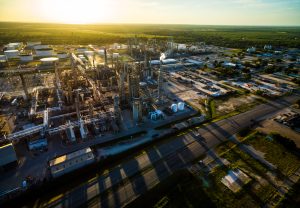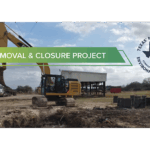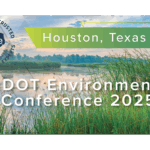
Phase 2 environmental site assessments play a critical role in determining the presence of contamination and assessing potential environmental risks. In Georgetown, these assessments are conducted to ensure the safety and compliance of properties with environmental regulations. Understanding the process and components of phase 2 assessments is essential for property owners, developers, and environmental professionals involved in property transactions or site development projects.
Understanding Phase 2 Environmental Site Assessments
Definition and Purpose of Phase 2 Assessments
Phase 2 environmental site assessments are crucial steps in the process of evaluating and addressing potential environmental hazards on a property. These assessments go beyond the initial Phase 1 assessment, which focuses on identifying potential sources of contamination. Phase 2 assessments involve detailed investigations to determine the actual presence and extent of hazardous substances in the soil, groundwater, or other environmental media.
By conducting Phase 2 assessments, property owners and environmental professionals can gain a deeper understanding of the risks posed by contaminants and develop effective remediation strategies to protect human health and the environment. These assessments play a vital role in ensuring compliance with environmental regulations and safeguarding the well-being of communities.
Key Components of Phase 2 Assessments
Phase 2 assessments encompass a range of key components that are essential for a thorough evaluation of environmental conditions. In addition to collecting samples for laboratory analysis, these assessments often involve the use of advanced technologies such as remote sensing and geophysical surveys to map subsurface contamination plumes and identify potential migration pathways.
Furthermore, Phase 2 assessments may include the installation of monitoring wells to track groundwater quality over time and assess the effectiveness of remediation efforts. Detailed geotechnical investigations are also common, especially in areas where soil stability and composition play a critical role in contaminant transport. By integrating these various components, Phase 2 assessments provide a comprehensive overview of environmental risks and support the development of sustainable land use practices.
Through meticulous data collection and analysis, Phase 2 environmental site assessments serve as valuable tools for informed decision-making in property development, regulatory compliance, and environmental stewardship. By identifying potential sources of contamination and evaluating their impact, these assessments pave the way for effective risk management strategies and sustainable development practices.
The Process of Conducting Phase 2 Assessments in Georgetown
Initial Site Investigation
Phase 2 assessments begin with an initial site investigation, which includes a thorough review of historical data and any available environmental reports. This information helps identify potential contamination sources and guides the selection of sampling points. Additionally, visual inspections of the property are conducted to identify areas of concern and potential contamination pathways. The findings from this investigation inform the subsequent steps in the assessment process.
Sampling and Analysis
Sampling is a critical component of phase 2 assessments. Environmental professionals collect samples of soil, groundwater, sediment, and other relevant media from predetermined locations on the property. These samples are then sent to accredited laboratories for analysis, where specialized testing methods are employed to detect and quantify the presence of contaminants. The results are compared to applicable regulatory standards and guidelines to determine the extent and significance of contamination.
The analysis plays a vital role in identifying the potential risks associated with the contaminants detected. This information helps stakeholders assess the level of remediation required and evaluate the impacts on future property use and development.
Risk Evaluation
Following the analysis, a risk evaluation is conducted to assess the potential harm that contaminants may pose to human health and the environment. This evaluation considers factors such as exposure pathways, toxicity levels, and the likelihood of migration. By evaluating the risks associated with the identified contaminants, environmental professionals can recommend appropriate remedial actions and help mitigate any potential adverse effects.
Regulatory Framework for Phase 2 Assessments
Federal Environmental Regulations
Phase 2 environmental site assessments in Georgetown are carried out in compliance with federal environmental regulations. These regulations, such as the Comprehensive Environmental Response, Compensation, and Liability Act (CERCLA) and the Resource Conservation and Recovery Act (RCRA), outline the requirements for assessing and managing contaminated sites. They establish the standards for identifying, evaluating, and remediating hazardous substances to protect both public health and the environment.
Georgetown’s Local Environmental Policies
In addition to federal regulations, Georgetown has its own local environmental policies that guide the process of conducting phase 2 assessments. Municipal codes and regulations provide specific requirements for environmental site investigations, remediation, and reporting. Working collaboratively with local regulators ensures compliance with Georgetown’s unique environmental priorities and enhances the efficiency and effectiveness of the assessment process.
The Role of Environmental Professionals in Phase 2 Assessments
Qualifications and Responsibilities
Environmental professionals with expertise in conducting phase 2 assessments play a crucial role in the evaluation and management of contaminated sites. These professionals possess a strong understanding of environmental laws and regulations, sampling techniques, data analysis, and risk assessment methodologies. They are responsible for planning and executing the assessment process, interpreting the results, and recommending appropriate remediation strategies based on their findings. Additionally, they provide expert guidance throughout the property transaction or development process, ensuring compliance with regulatory requirements and protecting the interests of all stakeholders.
Interaction with Property Owners and Regulators
Environmental professionals interact closely with property owners and regulatory agencies throughout the phase 2 assessment process. They collaborate with property owners to gather necessary information, obtain access to the site, and address any concerns or questions they may have. These professionals also communicate with regulatory authorities to ensure compliance with applicable regulations and facilitate the approval process for remediation plans, if necessary. By fostering open and transparent communication, environmental professionals help build trust among all parties involved and ensure efficient progress of the assessment and remediation process.
Outcomes and Implications of Phase 2 Assessments
Potential Environmental Concerns
Phase 2 assessments may uncover various potential environmental concerns that require attention. These concerns can range from elevated levels of heavy metals or petroleum hydrocarbons in soil to contaminated groundwater sources. By identifying these issues, environmental professionals can assess the associated risks and develop appropriate remediation strategies to address the concerns effectively. Early detection and proper remediation not only protect human health and the environment but also minimize potential liabilities for property owners.
Remediation Strategies
Based on the findings of phase 2 assessments, environmental professionals develop remediation strategies tailored to the specific site conditions and regulatory requirements. These strategies may involve various approaches, such as excavation and removal of contaminated soil, in situ treatment, or groundwater monitoring and containment. The selection of the most suitable remedial actions is a collaborative process that takes into account the potential impacts, cost-effectiveness, and long-term sustainability of the proposed solutions.
Impact on Property Transactions
Phase 2 assessments play a crucial role in property transactions, providing critical information to potential buyers, lenders, and insurers. These assessments help parties make informed decisions, assess potential environmental liabilities, and negotiate appropriate financial arrangements to account for any required remediation. By understanding the outcomes of phase 2 assessments, stakeholders can ensure the protection of their investments and facilitate smooth property transactions.
In conclusion, phase 2 environmental site assessments are an integral part of ensuring environmental compliance and protecting public health in Georgetown. By understanding the process, components, and implications of these assessments, stakeholders can navigate property transactions, development projects, and regulatory compliance with confidence. Environmental professionals and regulatory agencies work together to ensure the effective management and remediation of contaminated sites, promoting sustainable and safe development practices in Georgetown.
As you navigate the complexities of Phase 2 Environmental Site Assessments in Georgetown, consider partnering with ESE Partners. Our team of dedicated environmental engineers and scientists is equipped to support your needs for thorough assessment, effective remediation, and regulatory compliance. With a commitment to improving community quality of life and delivering opportunity to stakeholders, ESE Partners offers innovative solutions tailored to the unique environmental challenges of your business. Don’t let environmental concerns stall your progress. Request A Proposal today and move forward responsibly with ESE Partners by your side.








